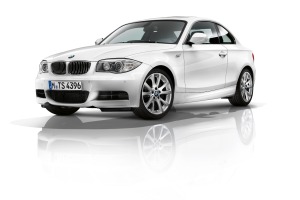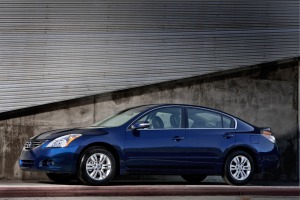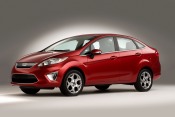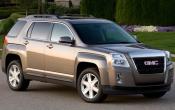Hybrids Pull Into the Automotive Mainstream
A growing variety of models promises to lure more American consumers as they face $3-a-gallon gasoline
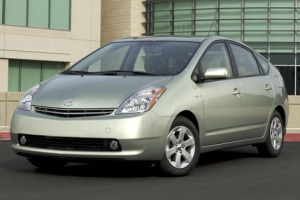
If any doubt remained that hybrid vehicles have become part of the automotive mainstream, it disappeared last spring. That's when Toyota began offering the industry's favorite sales bait — in the form of $2,000 incentives — on the Prius sedan, even though it already was America's best-selling hybrid.
"Gas prices had gone down, and anyway, people didn't think the cars were available because they had read articles saying you had to wait," explains Mary Nickerson, national marketing manager for Toyota's hybrids. "But actually we had just been bringing in inventory at a new, higher level."
With that hiccup behind it, Prius sales this year are expected to increase by about 50 percent, up to 175,000 cars. "Prius is still the poster child for hybrids that has a lot of momentum and gets a lot of attention," says Lonnie Miller, director of industry analysis for R.L. Polk, an automotive research firm in Southfield, Michigan.
Overall, as well, Toyota hybrids have some mojo: The Camry sedan and Highlander SUV were the second- and third-hottest hybrids in the country last year, and Toyota's new Lexus hybrids have begun strongly. Honda and Ford, the two other leaders, also are expecting to sell more Civic hybrids and Escape hybrids this year. Even laggard General Motors should have a significant impact on the market as it phases in a handful of robust new hybrids this year.
Hybrid enthusiasm waned just a bit last year. Sales increased to 255,000, a 28 percent increase over 2005 — but ranked as the second-lowest year-to-year percentage increase since 2000, according to Polk.
"There's a diminishing percentage of new-car intenders who say they would consider a hybrid," notes Art Spinella, president of CNW Marketing Research in Bandon, Oregon, and a leading automotive-industry observer. "And the amount they'd be willing to spend over and above is less. Like any vehicle that's new, once the fashion-statement portion is over, then it becomes more of a pocketbook issue."
But hybrids should still capture a hugely increased share of the U.S. market this year compared with 1.5 percent in 2006. First-quarter numbers alone showed about a 90 percent increase in hybrid sales over a year ago.
The hybrid market is gaining dimension in other ways, too. Automakers are fielding more hybrids with bigger engines that deliver chart-topping power and performance as well as improvements in fuel economy. And gradually, the big price gap between hybrids and their conventionally powered counterparts is coming down.
Here's what you need to know if you're interested in a hybrid.
Types of Hybrids
There are three main types of hybrids on the roads today, categorized according to how much performance their electrical systems can deliver and how robust the overall powertrains are.
Mild hybrids. These are the "lightest" form of hybrids because their electrical systems only complement the internal-combustion engine, not replace it to any significant degree. Mild hybrids typically shut off the engine at stoplights and in stop-and-go traffic but can completely power the vehicle only in very short bursts or up to a few miles per hour. Fuel-efficiency increases are only 10-15 percent. GM's defunct Chevrolet Silverado and GMC Sierra pickup hybrids were mild versions.
Full hybrids. These are so-called because the car, at times, can drive using only the electric motor, up to around 25 mph. Mileage improvements over conventional gas engines can range up to 45 percent, giving hybrids their fuel-sipping reputation. These are the most common kind of hybrid so far, including the Toyota Highlander and Ford Escape.
Muscle hybrids. These are full hybrids that come packed with something extra: a six- or eight-cylinder engine instead of a fuel-efficient four-cylinder. Muscle hybrids sacrifice some fuel economy in order to achieve better acceleration and other performance touchstones of conventional vehicles. The Lexus RX 400h and upcoming GMC Yukon qualify for this label.
Maker by Maker
Toyota clearly leads the hybrid derby, with its Prius, and full-hybrid versions of the Camry sedan (31,000 sales last year) and Highlander SUV (31,000 sales).
Prius essentially created the market because it was a midsize car that could seat four and became available only as a hybrid. It also acquired a cachet because green celebrities and regular consumers flocked to it. And in California, Prius ownership was a ticket to a state-issued sticker that allowed the driver to travel — even when alone — in the coveted carpool lanes.
Toyota has harnessed its Lexus luxury division to introduce two muscle hybrids, the RX 400h SUV and GS 450h sedan. With the extra power, each drives like a bat out of hell. "Lexus didn't want it to give a go-cart type of impression," says Miller. "When you build a hybrid off the RX 330, you don't want to damage that impression by having a lackluster hybrid sibling."
Hitting showrooms soon will be the vroomy Lexus 600h, Toyota's first hybrid to feature a V8 engine. Toyota's Sienna minivan hybrid is expected next year.
Honda is the No. 2 player in U.S. hybrids. Its ground-breaking Insight two-seater was first in the market, but its exotic styling and limited carrying capacity limited Insight to fewer than 1,000 sales last year. The Civic introduced in 2002 — usually considered a full hybrid — is the Honda that took off, climbing to 31,000 sales last year. An Accord full hybrid bowed in 2004 and sold nearly 6,000 units last year.
Ford jumped into the hybrid game before its Big Three rivals, in part because it needed new market opportunities and also because of the green sensibilities of Chairman William C. Ford III. The Escape SUV debuted in a full-hybrid version in 2004, and its Mercury Mariner cousin the next year. Escape sold more than 19,000 units last year.
This year, Ford has launched improved versions of both SUVs that now achieve as much as 34 mpg on the highway. For 2008, Ford Fusion and Mercury Milan hybrids will arrive, greatly extending Ford's hybrid lineup. And they'll feature enhanced technology.
"We've really pushed the engineering on the control system so you can do more efficient torque control and also maximize fuel," says Sherif Marakby, chief engineer in global hybrid core engineering for Ford. "The Fusion and Milan will get competitive performance zero to 60 [mph] as well as improved fuel economy."
General Motors fielded some mild hybrids in 2002 in its GMC Sierra and Chevrolet Silverado trucks, which boosted fuel economy by about 10 percent — and tickled contractors and other heavy-truck aficionados because they could plug into the hybrid motor as a work-site generator. GM stopped making them last year.
Instead, GM's current thrust is to field more robust hybrid systems. That began with the Saturn Vue Green Line, which debuted last year. It boosts mileage by about 20 percent, but GM admits it's still considered a mild hybrid because the electrical system alone can't power the car much past 5 mph. GM put the same system in a new Saturn Aura Green Line that is just becoming available and will do likewise in a new Chevrolet Malibu due out this fall.
Finally later this year, GM also will be launching its first robust hybrids, in the form of Chevrolet Tahoe and GMC Yukon SUVs. They're based on so-called "two-mode" technology that GM originally developed with BMW and Chrysler. These muscle models will notch about a 25 percent improvement in fuel economy over their conventional counterparts, yet carry a V8 engine. A similar Cadillac Escalade is to debut next year.
"We're going to take the market by storm," promises Micky Bly, GM's director of hybrid vehicle integration and controls. "We're not downsizing the engine like our competitors are. We'll offer great fuel economy, but also full utility — like if a customer wants to tow."
And, illustrating the new importance to automakers of fielding a variety of hybrids, beginning this fall the Saturn Vue Green Line will be available in three different configurations: a regular powertrain, the current mild-hybrid form and a full hybrid using two-mode technology that will deliver 45 percent mileage improvement over the conventional Green Line.
Nissan has just introduced a full-hybrid version of its popular Altima sedan.
Chrysler is bringing up the rear but promises a full-hybrid Dodge Durango SUV in early 2008, and then more hybrid vehicles thereafter. Clearly, using the two-mode technology, Durango will rank as a muscle hybrid.
Other automakers including Kia, Porsche and Mazda aren't far behind either.
Price Differentials
Initially, it cost as much as $5,000 for a hybrid powertrain, and it would take several years for an owner to finally offset the price differential with lower fuel consumption compared with a similar, conventionally powered car.
With each new hybrid, however, that gap is narrowing. For mild hybrids, you might pay as little as $1,500 to $2,000 extra now. Ford's Escape hybrid is priced about $3,000 more, and Toyota's Highlander about $4,000 more. (Of course, the typical bundling of other options along with a hybrid powertrain confuses the pricing picture.)
And with each new hike in gasoline prices, it takes less time to make up the difference.
Tax Incentives
The federal government began providing credit for taxpayers who purchased hybrids in 2005, ranging from $250 to $3,150, depending on the fuel economy and weight of the vehicle. But high-income taxpayers, who may be subject to the Alternative Minimum Tax (AMT), may find their credits limited.
Along with dwindling differentials for hybrid powertrains, the tax credits can practically wipe out price premiums. The new Saturn Aura hybrid, for instance, lists for $22,695, about $1,600 over the regular Aura. The available federal tax credit of $1,300 means you'd pay only about $300 extra for the hybrid version.
As hybrids begin selling in volume, the current tax credits will go away — something that already is happening with Prius. But as hybrids continue to gain popularity and gasoline prices remain high, many people expect Congress to reconfigure the tax credits at an even more generous level.
Mileage-Figure Adjustments
Many hybrid buyers were nonplussed to find out that their actual highway mileage didn't hit the upper ranges promised on their car stickers. Most notably, earlier versions of Prius and the Civic hybrid greatly overstated their actual capabilities, promising highway mileage in the 60-mpg range.
The U.S. Environmental Protection Agency has fixed that now with a new mileage-calculation system. It applies to all 2008 model-year vehicles, but hybrids were hit particularly hard with downward adjustments. And while hybrids' mileage claims aren't as high as before, buyers should find them much truer to their own experience.
"I don't think it will make much difference to the market," Miller says, "except among the small percentage of the public who were keeping close track of it."
Future Technology
While hybrids for sale today still represent the cutting edge of America's drive to break our dependence on foreign oil, other technologies are coming to fruition as well. All-electric cars are slowly coming to market. Meantime, ethanol fuel, biodiesel and hydrogen-powered fuel cells also are at various stages of the commercialization continuum, with many "flex-fuel" vehicles already on the road. And hybrid powertrains can be used with any of them.
"We don't believe there is one silver-bullet powertrain technology," says Andreas Truckenbrodt, executive director of DaimlerChrysler's hybrid-development center. "In some applications, conventional gasoline makes sense. In some, diesel will be better than hybrids, or maybe ethanol."
In any event, the most likely next wave is "plug-in" hybrids. Plug-ins are so called because, at night, you'll be able to plug them into a 110-volt outlet in your garage. Several hours later you'll be able to run only on electrical power up to, say, a 40-mile overall commute. Combined with a full tank of gasoline, plug-ins like GM's promised Saturn Vue should be able to go 600 miles. (See "Will GM Win the Great Plug-In Hybrid Race?")
But the debut of plug-in hybrids hinges on automakers' harnessing the next generation of batteries, based on lithium-ion technology like that which powers laptop computers. Lithium-ion systems are much lighter and more powerful than today's nickel-metal hydride batteries. So plug-ins should be able to take you a mile for only 60 or 70 cents per gallon in electricity costs.
That looks pretty good compared with the $3 a gallon that we'll all be paying this summer.





